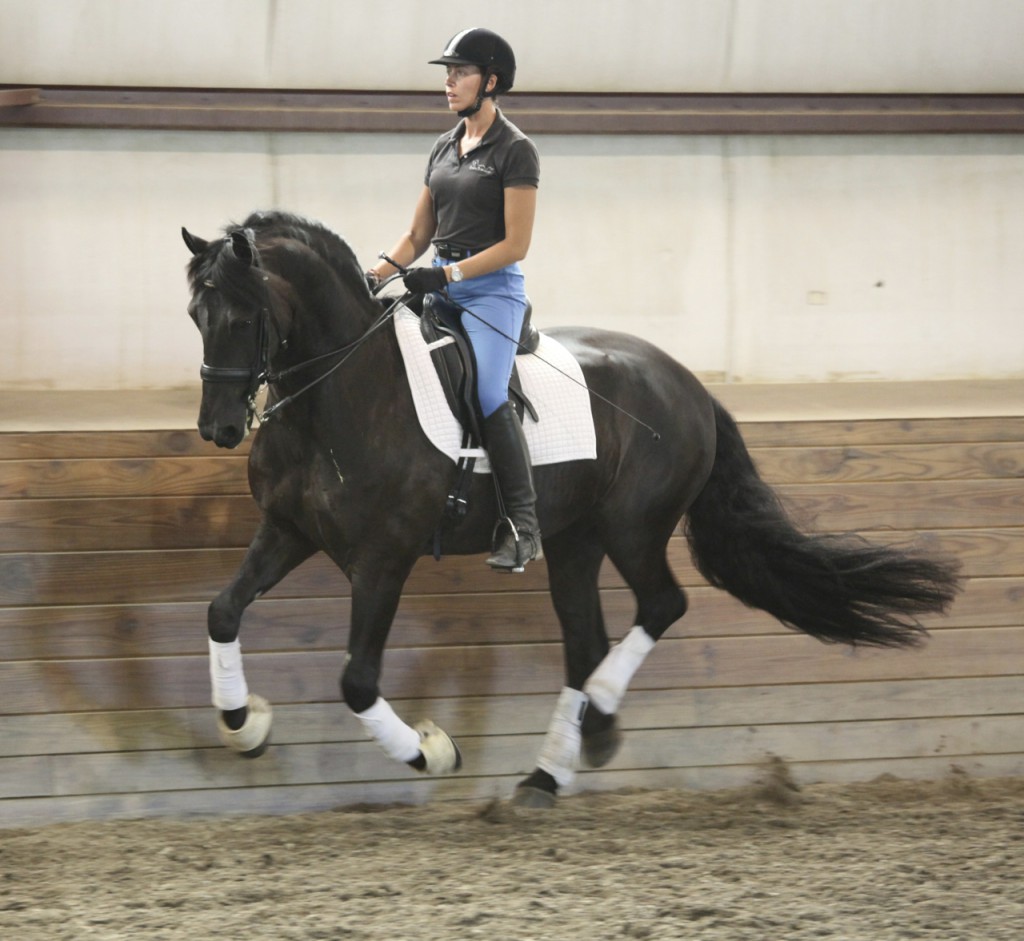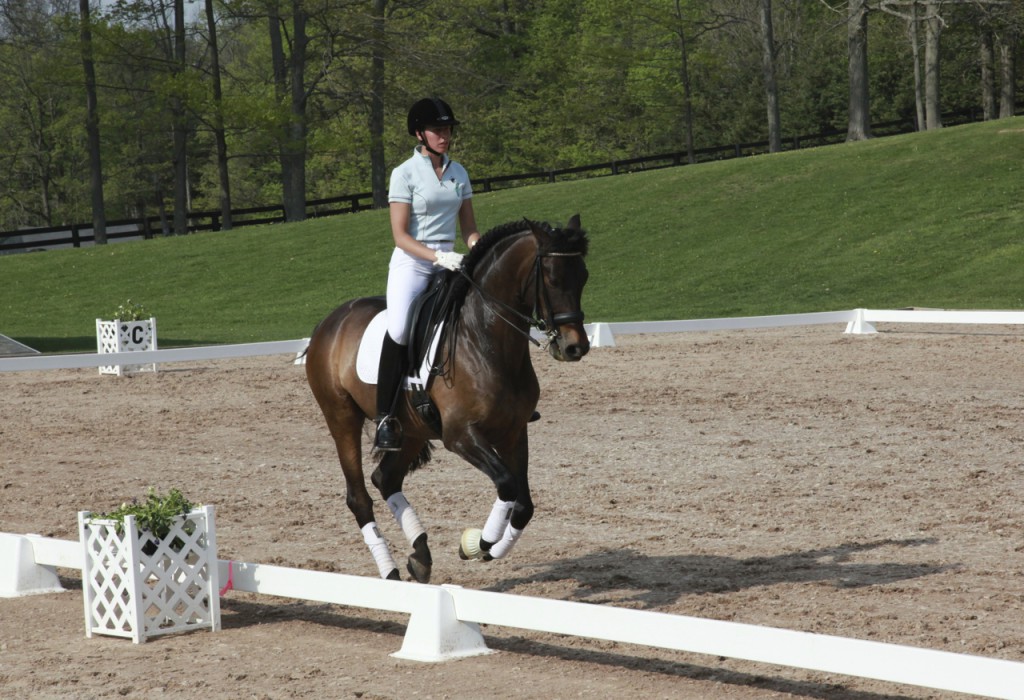Sanne, ridden by Brandi Rivera
Opening
Habits can be helpful. They prevent us from having to learn certain activities every time we encounter them – like eating, brushing our teeth or walking up stairs. Habits can also be dulling and keep us from a wide-awake, fresh experience of the moment. They can narrow our focus to the known, rather than opening us to the unexpected.
Incorporating variation in our day is one way to open to new possibilities. Take a different route to work. Sit at a different spot at the dining room table, use your non-dominant hand for eating or teeth brushing. Experiment with moving as slowly or as quickly as you can. With your horse, try doing things in a different order. Start by giving the horse a massage, taking him for a walk, or grooming slowly and sensually. Or warm up by walking in meandering patterns around the field or arena. Variation opens us to new possibilities and greater feeling.
Slowing
Horse time is not clock time. From their perspective, time is expansive, marked by food, shelter, dark and light and our presence or absence. When we enter horse time, we can breathe, feel our bodies and notice what is here right now. Being present dissolves the tensions of the rush and press of our daily lives. When we hurry, we are focused on a point in the future, rather than dropping into the deep stillness of the moment.
Slowing down helps us to become more aware, more sensitive and flexible. Picture everything around you slowing and becoming more spacious. As you do that, you will begin to notice that each part of what you are seeing and feeling becomes more distinct and clear. Bring that slowing into each part of your movement: the way you close the car door, walk to the stable, put on your boots, pick up a grooming brush. Taste and savor each moment instead of rushing through your ride, or pushing your horse to get something “right.”



